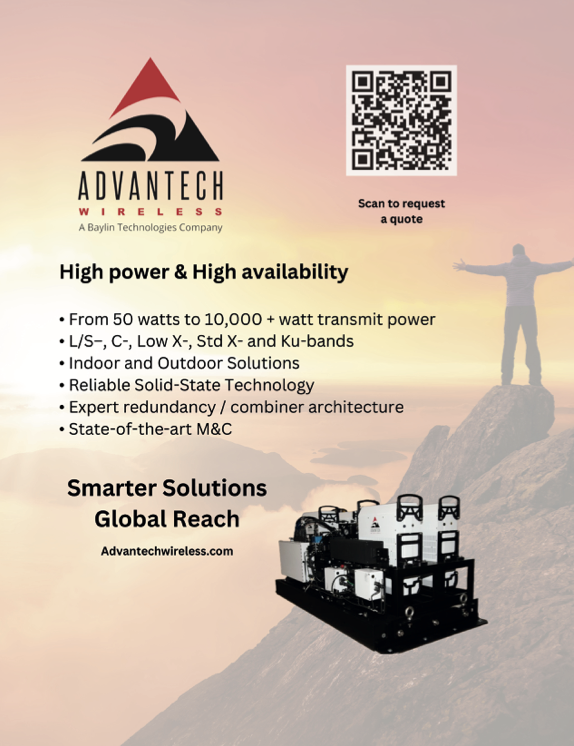Sources of federal funding for space startups
The Pentagon recently requested $144 million to fund its new Office of Strategic Capital (OSC). Designed to “attract and scale private capital for national security by increasing investments in priority critical technology areas,”1 the Department of Defense identified space technology as one of 14 critical technology areas eligible for support, calling space tech “vital to maintaining the United States’ national security.”2

Financing options would initially include loans and loan guarantees for both startups and licensed funds, allowing private venture to “backstop” their investments.3 The OSC stated that it may also match private sector funds with Research, Development, Test, and Evaluation (RDT&E) funding.4
The OSC is one of the most recent, but my no means the first, government program introduced at the intersection of government funding, space development and venture capital. In 1958, just one year after Sputnik, Washington passed legislation paving the way for small-business investment companies to receive tax benefits and government loans to support their investment programs.5
As has been well documented, the Space Race led to both a booming market for electronics and large amounts of research funding for universities, many of which first created standalone computer science departments6 and other programs to fuel America’s extraterrestrial ambitions. The race to the moon was, in some ways, the best thing that could have happened for the venture ecosystem, providing the opportunity to legitimize the model with fantastic returns and the most highly public successes.
In the following years, the start-up sector continued to benefit from government initiatives. The decision in 1979 to remove prohibitions on pension fund exposure to venture capital played a pivotal role in birthing the modern age of venture capital funding.7
But the support was also direct — between 1982 and 1988, the federal government (and in particular the Department of Defense) provided over $1.35 billion in start-up funding (almost 10% of all venture capital investment over that period).8
These days, even as government contracts remain the main driver of the space economy9, it has become vogue for agencies to establish their own venture capital wings. In 2003, the Army initiated its own venture capital program, and NASA has long participated in “America’s Seed Fund” through which entrepreneurs, startups, and small businesses with less than 500 employees can receive funding and non-monetary support to build, mature, and commercialize their technologies.10
In 2021, just two years after its inception, the U.S. Space Force began a partnership with venture capital firm Embedded Ventures, entering into a Cooperative Research and Development Agreement (CRADA).11 According to Embedded Ventures co- founder Jordan Noone, venture collaborations can help provide speed where government entities might be slower to move.
How can interested startups avail themselves of the funding opportunities that D.C. has to offer? NASA’s Small Business Innovation Research / Small Business Technology Transfer (SBIR/STTR) program12 (part of America’s Seed Fund, mentioned above) offers companies with less than 500 employees the chance to apply for non-dilutive funding and other non-monetary support.13
The next “Ignite” Phase I solicitation ($150,000 in funding) is now open, with proposals due by July 30, 2024. Applicants can submit their information via slide deck or white paper. The next Phase II solicitation ($850,000 in funding) period will be open July 22, 2024 through September 3, 2024 and requires additional proposal materials. NASA offers a SBIR “Ignite Catalyst” program to help founders learn about and apply for SBIR funding.
The Space Force’s “Space Ventures” SpaceWERX program similarly solicits proposals, most recently awarding up to $1.7 million each to 19 startups, with funding paid out over 15 months. SpaceWERX also offers “Strategic Funding Increase” (STRATFI) and “Tactical Funding Increase” programs. The two programs differ based on award sizes, matching fund requirements and performance periods. STRATFI SBIR/STTR funding amounts range from $3 million to $15 million over 48 months, while TACFI funding amounts range between $375,000 and $1.9 million over 24 months.14
Note that private investment does not necessary preclude a startup from applying for America’s Seed Fund programs. In fact, even companies that are majority- controlled by a venture capital fund may be eligible, but generally only if the applicable venture fund: (i) is itself more than 50% directly owned and controlled by citizens or permanent resident aliens of the United States; and (ii) together with the controlled startup and its affiliates, employs 500 or fewer persons.
For awards from agencies that allow small business owned by not one but multiple VCs, the VCs that hold such a majority stake of the awardee must have a place of business located in the United States and be created or organized in the United States, or under the law of the United States, or of any State.15

Even during the down year of 2023, the space sector attracted $12.5 billion in investments,16 and according to Space Capital founder Chad Anderson, space infrastructure did especially well, partially due to the desire for defense technology.17 In the first quarter of 2024, funding for space startups more than doubled year over year, from $2.9 billion to $6.5 billion.18
According to former NASA engineer and current Harvard space economist Sinead O’Sullivan, “A lot of the time we talk about venture capital and private equity, however, governments are equally if not more important” partially because government contracts can give space companies the foothold to then go out and obtain private investment.19 Even SpaceX received seed funding from NASA (via a $3 million grant in 2019).20 21
For the foreseeable future, programs such as OSC, America’s Seed Fund, SpaceWERX and other venture/government/space initiatives will continue to play a leading role in supporting the New Space ecosystem.

Curt Blake
Author Curt Blake, Senior Columnist to SatNews Publishers, is Senior Of Counsel at Wilson Sonsini Goodrich & Rosati. He is an attorney and senior executive with more than 25 years of experience leading organizations in high-growth industries— and more than 10 years as the CEO of Spaceflight, Inc.— at the forefront of the New Space revolution. Curt has extensive expertise in strategic planning, financial analysis, legal strategy, M&A, and space commercialization, with deep knowledge about the unique challenges of New Space growth and the roadmap to success in the that ecosystem.
The views expressed in this article reflect those of the author himself and do not necessarily reflect the views of his employer and its clients.
References
- https://www.cto.mil/osc/critical-technologies/
- https://www.cto.mil/osc/critical-technologies/
- https://media.defense.gov/2024/Mar/09/2003409961/-1/-1/0/FY24-INVESTMENT- STRATEGY-FOR-THE-OFFICE-OF-STRATEGIC-CAPITAL-DISTRIBUTION- STATEMENT-A-%20APPROVED-FOR-PUBLIC-RELEASE.PDF
- https://washingtontechnology.com/opinion/2024/03/dods-investment-arm-details-its- financial-playbook-scaling-out-tech/395149/
- https://www.bookforum.com/print/2602/vc-an-american-history-by-tom-nicholas-22006
- https://kenney.faculty.ucdavis.edu/wp-content/uploads/sites/332/2018/03/how-venture- capital-became-a-component-of.pdf
- https://www.bookforum.com/print/2602/vc-an-american-history-by-tom-nicholas-22006
- https://www.bookforum.com/print/2602/vc-an-american-history-by-tom-nicholas-22006
- https://www.bookforum.com/print/2602/vc-an-american-history-by-tom-nicholas-2200
- https://www.nasa.gov/sbir_sttr/
- https://techcrunch.com/2021/10/13/u-s-space-force-partners-with-vc-firm-embedded-ventures-under-new-rd-agreement/?guccounter=1&guce_
- https://techcrunch.com/2021/10/13/u-s-space-force-partners-with-vc-firm-embedded-ventures-under-new-rd-agreement/?guccounter=1&guce_
- https://www.nasa.gov/sbir_sttr/
- https://www.nasa.gov/sbir_sttr/
- https://www.afmc.af.mil/News/Article-Display/Article/3718727/afwerx-spacewerx-ventures-divisions-launch-notice-of-opportunity-for-space-appl/
- https://www.sbir.gov/faq/vc-participation
- https://www.goingvc.com/post/space-the-final-frontier-of-vc-investing-in-the-new-space-race
- https://www.goingvc.com/post/space-the-final-frontier-of-vc-investing-in-the-new-space-race
- https://www.goingvc.com/post/space-the-final-frontier-of-vc-investing-in-the-new-space-race
- https://www.reuters.com/technology/space/space-startups-see-funding-surge-government-spending-remains-high-report-says-2024-04-11/#:~:text=Funding%20
- https://techcrunch.com/2021/10/13/u-s-space-force-partners-with-vc-firm-embedded-ventures-under-new-rd-agreement/?guccounter=1&guce_



